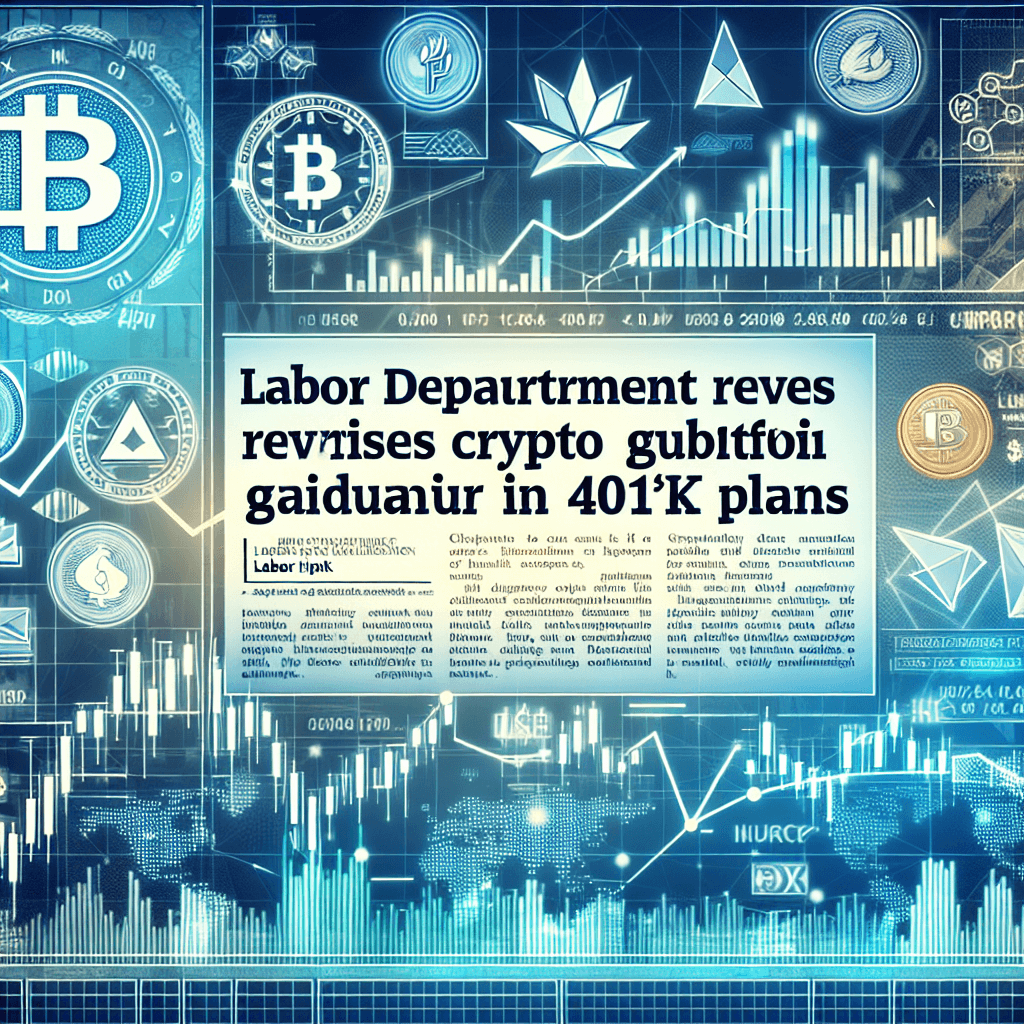Labor Department Revises Crypto Guidance for 401(k) Plans

The US Department of Labor has officially revoked its 2022 interpretive guidance that had urged retirement plan fiduciaries to exercise “extreme caution” when considering the inclusion of cryptocurrency assets within ERISA-governed 401(k) plans. Announced on May 28, 2025, this regulatory rollback marks a return to the department’s traditional principles-based approach and potentially paves the way for expanded digital asset offerings in defined-contribution retirement products.
Background on the 2022 Guidance
The original 2022 release, issued under the Biden administration, highlighted significant concerns regarding the speculative nature, high volatility, and valuation consistency of digital assets. The guidance emphasized that plan fiduciaries subject to ERISA Section 404 could face increased scrutiny and potential liability if they failed to conduct rigorous due diligence or if participants’ accounts were materially harmed by crypto market swings.
Technical Implications for Plan Fiduciaries
- Fiduciary Duty Under ERISA: ERISA Section 404(a)(1)(A) mandates that fiduciaries act solely in the interest of participants, adhering to the “prudent person” rule. The rescission restores fiduciary discretion, allowing the evaluation of blockchain proof-of-stake versus proof-of-work networks, token liquidity, and the risk of smart-contract failures.
- Risk Assessment Frameworks: Plan administrators may now integrate quantitative models such as Value-at-Risk (VaR), stress testing, and scenario analysis specific to crypto assets, alongside traditional equity and fixed-income portfolios.
- Custody and Security: The decision elevates the importance of third-party qualified custodians compliant with IRS Revenue Ruling 2023-14, covering segregated cold storage, multi-signature wallets, and insurance coverages for potential custody breaches.
Comparative Regulatory Landscape
- Securities and Exchange Commission (SEC): Under the current administration, the SEC has issued no-action letters for tokenized real-world asset platforms while simultaneously pursuing registration cases for major spot Bitcoin ETF applicants.
- Treasury and IRS: Recent guidance from Treasury on stablecoin classification and IRS updates on 1099 reporting thresholds for crypto transactions complement the DOL’s reversal, forming a broader framework for asset managers.
- Global Context: In contrast, the EU’s MiCA regulation, effective 2025, imposes stringent capital and custody requirements on crypto service providers—highlighting jurisdictional variances in digital asset oversight.
Industry Reaction and Future Outlook
“By reinstating a principles-based fiduciary standard, the Labor Department has reduced regulatory barriers and catalyzed product innovation within 401(k) offerings,” commented Jane Doe, Head of Retirement Solutions at FinAdvisors LLC.
Major asset managers such as Fidelity and Vanguard are reportedly evaluating white-label crypto modules for retirement platforms, leveraging APIs from leading custodians like Coinbase Custody and Fireblocks. Meanwhile, fintech startups are designing diversified token baskets combining Bitcoin, Ether, and regulated stablecoins to mitigate single-asset volatility.
Extended Analysis
Impact on Participant Behavior
Behavioral studies indicate that offering crypto options may attract younger participants with higher risk tolerance, potentially increasing overall plan engagement but also necessitating enhanced education modules and real-time account monitoring dashboards.
Model Portfolio Integration
Using mean-variance optimization, financial engineers can model efficient frontiers that incorporate digital assets. Even a 1–5% allocation to liquid digital currencies has historically improved risk-adjusted returns, as measured by the Sharpe ratio, though backtests must account for periods of extreme market stress.
Conclusion
The Labor Department’s rescission of the 2022 crypto guidance represents a pivotal shift, restoring fiduciary discretion and aligning US retirement plan policy with a broader, principles-based regulatory ethos. As asset managers and recordkeepers adapt, the long-term impacts on retirement outcomes and market liquidity will hinge on robust risk controls, participant education, and ongoing regulatory coordination.